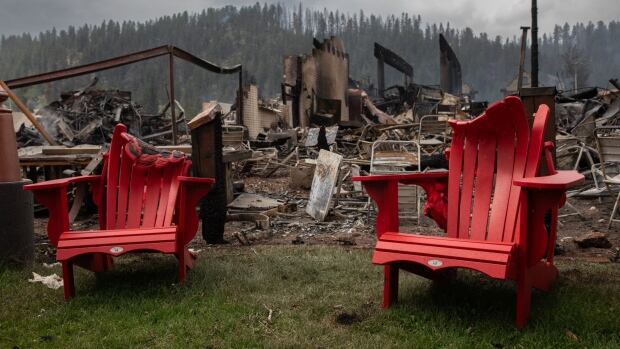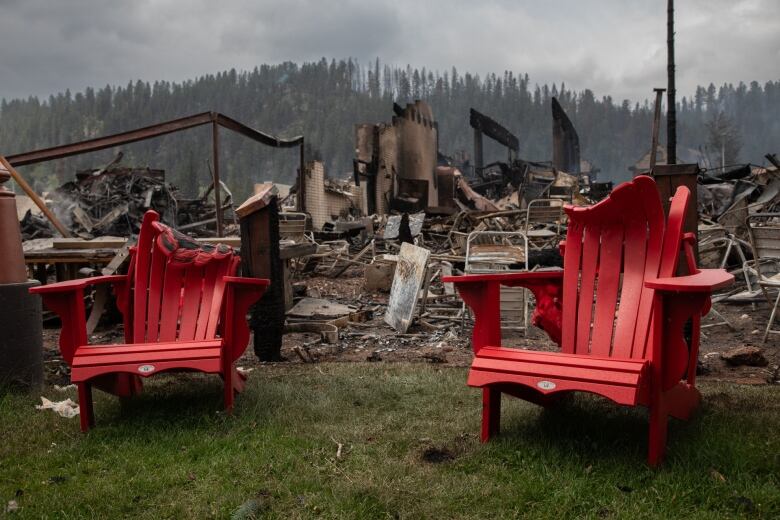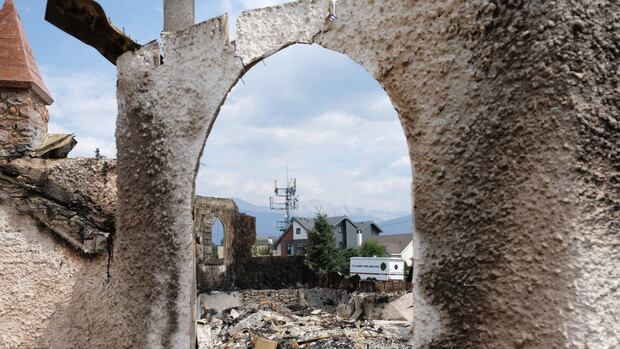
Crews on the front lines of a wildfire that incinerated Jasper are working to ensure the community is not damaged by the flames twice.
The fire continues to burn out of control and remains a threat to the historic townsite in the heart of Jasper National Park.
Close to one-third of the townsite’s structures are destroyed and early estimates suggest the wildfire could cost the insurance industry up to $700 million, making it one of the most expensive wildfire disasters in Canadian history.
In a statement issued late Sunday, Parks Canada said firefighters are making progress in strengthening fire guards that will help slow the spread of the flames should the fire advance once again.
Cooler, wet weather over the weekend gave crews critical time to make progress, but increasingly volatile activity on the fire is expected by Thursday, officials said.
With temperatures in the area this week expected to slowly rise, Parks Canada says it’s vital to keep making progress now.
“Weather forecasts indicate that dry conditions will make it easier for the wildfire to grow, making the progress now so important,” the federal agency said in its statement on social media.
During a news conference Monday, Environment Minister Steven Guilbeault said he has been in close contact with Parks Canada and his provincial counterparts in Alberta about the ongoing battle against the fire, and to prepare financial assistance for evacuees.
Alberta officials say an estimated one-third of the structures in Jasper are destroyed, including the St. Mary and St. George Anglican Church, built in 1928.
He said the rapid evacuation of the park a week ago was a testament to the high level of co-ordination between all levels of government in managing the crisis. That will continue as the focus turns from fighting the fire to rebuilding what was lost, Guilbeault said.
“Jasper National Park and the community of Jasper hold a special place in all our hearts,” he said during a news conference Monday.
“We must work together to … restore the community of Jasper and the lives and businesses impacted by this terrible event.”
Guilbeault said the community is now being prepared for a staged re-entry, although there is no clear timeline for a return.
All active fires in the townsite have been extinguished and crews are now focused on expanding a “buffer” zone around it, Guilbeault said.
As cooler wet weather moved in over the weekend, crews were busy on several fronts. The Jasper Skytram Road was widened with bulldozers to create a wider control line on Whistlers Mountain to protect the community.
Meanwhile, a 12-inch high sprinkler line along the fire guard, which will protect Jasper from fire spread from the west or north, is nearly complete.
Crews have been mopping up wildfires near buildings and infrastructure at risk. Ontario firefighters attacked the north line on the Palisades bluffs. Troops with the Canadian Armed Forces worked on mopping up spot fires near the northwest side of town, Parks Canada said.
More than 20,000 people were ordered to evacuate from the national park last Monday due to fast-moving wildfires that threatened from the north and south.
By Wednesday, flames moved in from the south, consuming 358 out of 1,113 structures in the townsite about 365 kilometres west of Edmonton.
In a new report, credit rating agency DBRS Morningstar said it believes potential insured losses from the disaster could eclipse those incurred in the 2011 wildfire in Slave Lake, Alta., which — adjusted for inflation — reached about $700 million.
The only fire that topped that disaster was the 2016 wildfire in Fort McMurray, Alta., which resulted in inflation-adjusted insured losses of $4.4 billion and was the costliest wildfire in Canadian history.
The credit rating agency said, as extreme weather events increase in size and frequency, it’s driving up the number of severe weather-related losses across the country, putting insurers and claimants under increasing strain.
It’s still too early to predict whether the 2024 wildfire season will be comparable with 2023, which marked the “most active and destructive” wildfire season on record, the agency said.
As the fire spread and ripped through the townsite, it eventually merged with the fire north of Jasper The two fires, as well as the Utopia wildfire near Miette Hot Springs, make up a cluster called the Jasper Wildfire Complex.
The flames have consumed an estimated 32,000 hectares, making it the largest wildfire the park has seen in over a century.
It’s unclear when the town’s roughly 5,000 residents will be allowed to return home or when the park gates will be re-opened to visitors. Officials have said the fire could burn for months and may remain a danger to the community for weeks.

